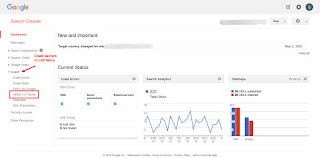There are four types of goals in Google Analytics. Destination, duration, Pages/Screens per session and Event. A completed action or process is considered as a goal. Event tracking code is implemented to track the event goals - one type of measurement to analyse the user engagement.
A user interaction or behaviour with any website element is considered and called as an event. To track this user interactions, we set-up event tracking code with the help of Google Analytics tool. The results of all the action data is reported through Analytics reporting tab/interface which is located in top of the tool. You can gain more insights on how user interacts with your website and its content/elements with this feature of Google Analytics.
There are many types of events. Below are some examples of events and piece of codes to install and execute them.
1. Banner Ads
2. Clicks on Social Icons
3. Videos
4. Form Fill-ups(It can be Sign-up Form, Contact Us or Inquiry/Free estimate request Form etc.)
5. Clicks on Emails(Click to Email Option Should Be Present)
6. Call to Action(Call or Add to Cart/Shopping Cart etc.)
Here are the parameters in which you can pass the value and ready to go!
1)Forms Like Free Website Analysis Request(Ideal for )
onClick="_gaq.push(['_trackEvent', 'Analysis', 'Click Link', 'Analysis Request']);"
2)PDF Downloads
onClick="_gaq.push(['_trackEvent', 'Temporary Benefits', 'PDF', 'Temporary_Benefits.pdf']);"
onClick="_gaq.push(['_trackEvent', 'One Page Stratergic Plan', 'PDF', 'OPSP_final.pdf']);"
3)Signup Form: News Letter Signup
onClick="_gaq.push(['_trackEvent', 'Submit', 'Form', 'Contact Us']);"
4)Social Icon Clicks
onClick="_gaq.push(['_trackEvent', 'Subscribe to Blog', 'Newsletter', 'Blog']);"
onClick="_gaq.push(['_trackEvent', 'Follow Us on Twitter', 'Signup', 'Twitter']);"
onClick="_gaq.push(['_trackEvent', 'Be a fan on Facebook', 'Fanpage', 'Facebook']);"
onClick="_gaq.push(['_trackEvent', 'RSS Feed', 'Feeds', 'RSS Feed']);"
onClick="_gaq.push(['_trackEvent', 'Google +', 'Google +1 Page', 'Google']);"
onClick="_gaq.push(['_trackEvent', 'Connect with us on LinkedIn', 'Social Media', 'LinkedIn']);"
onClick="_gaq.push(['_trackEvent', 'Google+', 'Social Media', 'G+']);"
onClick="_gaq.push(['_trackEvent', 'Visit our Facebook page', 'Social Media', 'FB']);"
onClick="_gaq.push(['_trackEvent', 'Follow us on Twitter', 'Social Media', 'Twitter']);"
onClick="_gaq.push(['_trackEvent', 'Visit our Youtube Channel', 'Social Media', 'YouTube']);"
onClick="_gaq.push(['_trackEvent', 'Pinterest', 'Social Media', 'Pinterest']);"
5)Videos
onClick="_gaq.push(['_trackEvent', 'Videos', 'Play', 'Baby\'s First Birthday'])"
Each piece of custom code contains four elements[Category | Action | Label | Value], such as:
_trackEvent - A Method
Analysis - A Category
Click Link - Click Link
Analysis Request - Labels
------------------------------------------------------------
Values - You can type integer rather than string - _gaq.push(['_trackEvent', 'Videos', 'Video Load Time', 'Gone With the Wind', downloadTime]);
Non-Interaction Events - Boolean
------------------------------------------------------------
If you're not tech savvy or do not have any technical skills, then you can take help of a web-publisher.
P.S.:
>>Analytics should be already set-up
>>If have no tech skills, then dont worry. There are many plugins available for WordPress sites, but it also needs testing and monitoring after installation.
>>This feature can also used with Google Tag Manager





